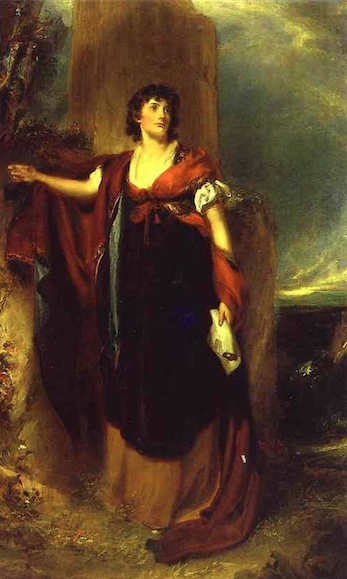
Janet McClean’s “Lane’s Ladies” talk in the National Gallery of Ireland highlighted the portraits of women collected by Ireland’s most famous art dealer, Hugh Lane, focusing on those now in the National Gallery’s collection. The speaker, a curator at the gallery, presented her thoughts on women in portraiture, the western art world, and the art market in the early twentieth century when Lane was active. She also discussed in detail two of the best portraits of women in their collection.
McClean pointed out that it’s much easier for art dealers to sell portraits of women than men. Portraits of women can be retitled to remove reference to their individual identity – “Miss Jane Doe” can become “Beautiful Woman” or even an ideal like “Truth” or “Beauty” without any change to the picture itself. While portraits of men inevitably elicit questions about the man’s identity, viewers and buyers are prepared to accept anonymous women. There are, of course, very few pictures of men entitled “Beautiful Man”, “Handsome Man”, or “Fidelity”, and few households have portraits of unnamed and unrelated men hanging on the walls. So there are good business reasons for dealers like Hugh Lane to take an interest in women’s portraits.
At the beginning of the twentieth century, when Lane was in the art dealer business, exhibitions in England collected portraits of women over previous centuries, leaving art from different places in radically different styles next to one another. Portraits of contemporary women dressed in eighteenth century costume were particularly popular, and some experimental artists criticised those who painted these kinds of works as having their “finger on the pulse” of the marketplace, always looking for something traditional.
Over the period of 1914 to 1918, Lane gave the National Gallery of Ireland a series of gifts, half of which were female portraits. McClean explained this disproportionately high number by pointing out Lane’s affection for portraits of women in general and “women with character” in particular. She pointed to two of the best portraits in their collection gifted by Lane, one painted in 1766 by Thomas Gainsborough of Anne Horton and an early nineteenth-century portrait of Elizabeth Foster by Thomas Lawrence.
Both women were involved in gambling and had serious debts. Anne often refused to pay for portraits she commissioned, leaving them in the studio of the artist. Her marriage to a younger brother of George III was scandalous since she was a widow. Gainsborough painted several portraits of her, but the one left by Lane in the gallery’s collection is exceptionally good. She appears pale and demure with very striking eyes.
Lawrence’s portrait of Foster, meanwhile, was designed to demonstrate her interest in the antique world by dressing her in a Roman costume beside a ruined classical column. She lived for most of her adult life with an aristocratic couple, as mistress to the husband and very close friend to the wife, who likely knew about her husband’s affair. The fact that both women had Irish connections likely helped to draw Lane’s attention.
McClean went on to talk about Lane’s successes and failures as an art dealer, but this section was clearly the weakest. There was little of the interesting insight that was apparent in the earlier part of the lecture, and it ended by falling into boring biographical details of Lane himself.
Clearly, Hugh Lane made an enormous contribution to Irish art, and his portraits of women in the National Gallery are a highlight. McClean was able to demonstrate what makes them interesting with obvious passion even if it didn’t carry through to the end of the event.






